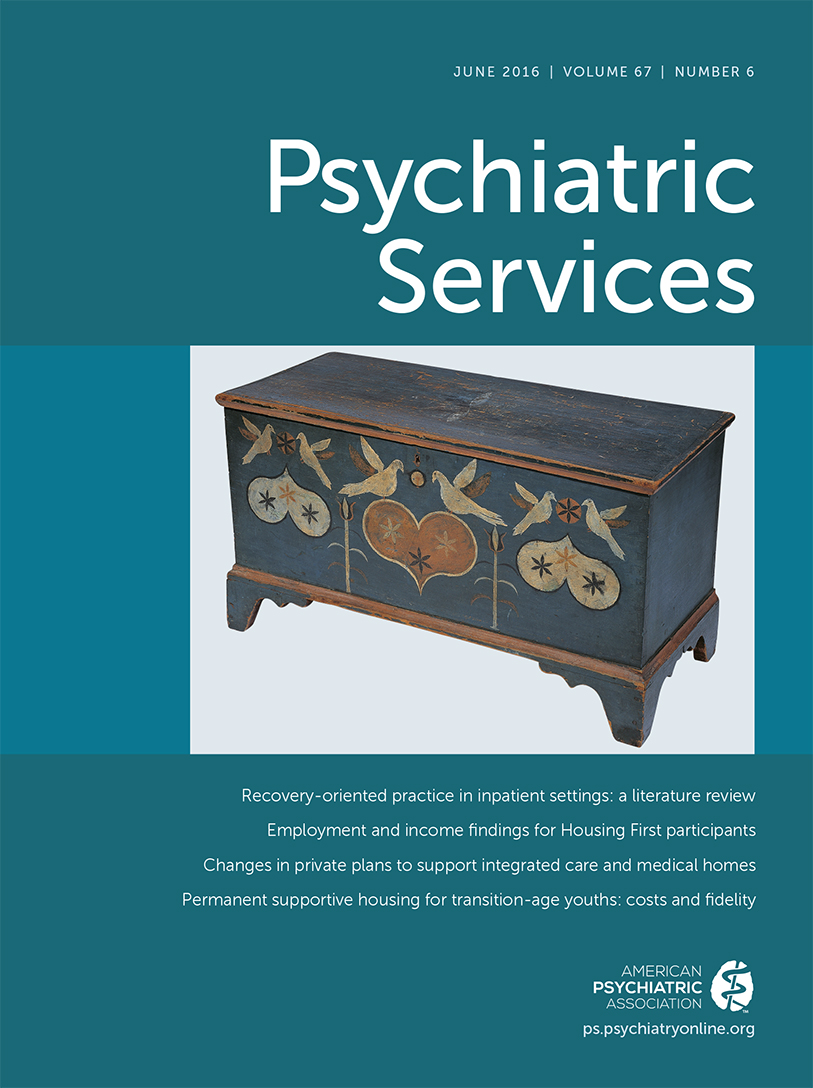This Month’s Highlights
Recovery Orientation in Inpatient Settings
For more than two decades, the concept of recovery has been central to the organization of mental health services. However, a literature review this month highlights the limited extent to which recovery-oriented practice has been integrated into inpatient settings. Anna K. Waldemar, M.Sc., and colleagues examined results from eight studies conducted in adult inpatient settings from 2004 to 2014. They found that inpatient staff often had simplistic and contradictory views of recovery and little knowledge about how to implement its principles. Even when staff understood central aspects of recovery practice, such as instilling hope and collaborating with patients to increase autonomy, the realities of their work settings led them to focus on stabilizing illness, providing medication and psychoeducation, and addressing problems and deficits. Factors such as rapid patient turnover and understaffing also reinforced traditional medical and crisis-driven practice. The findings raise the question of whether recovery-oriented practice should be a part of inpatient psychiatric care, the authors conclude. Further research is needed to clarify how the concept of recovery applies to inpatient settings and to examine challenges posed by the current organization of these settings (page Original article: 596).
Private Plans Are Adapting to Integrated Care
The delivery of behavioral health services is changing rapidly. Primary care practitioners are expected to address behavioral health through patient-centered and integrated care. From 2003 to 2010, private health plans made changes to their behavioral health contracting arrangements with an eye toward soon-to-be-implemented provisions of the Mental Health Parity and Addiction Equity Act of 2008 and the Affordable Care Act, according to a study by Constance M. Horgan, Sc.D., and colleagues, who analyzed national data from private plans. The changes supported integration of general medical and behavioral health care, medical home initiatives, and provider incentive programs (page Original article: 622).
AOT Implementation: A National Survey
Forty-five states have statutes authorizing assisted outpatient treatment (AOT). In interviews with key informants, Marcia L. Meldrum, Ph.D., and colleagues found that 20 states had the most active programs and that programs varied considerably. The authors identified three AOT implementation models: community gateway, emphasizing identification of persons with serious unmet needs who are treatment nonadherent (eight states); hospital transition, in which patients enter AOT after discharge (ten states); and surveillance, which focuses on ensuring treatment for persons considered a danger to others (seven states). Many states have implemented AOT on a limited scale, with minimal evaluation efforts, and the authors conclude that it is critical to develop rigorous evidence on the operation and impact of AOT programs (page Original article: 630).
Focus on Homelessness and Housing
Five studies this month assessed the effectiveness of homelessness services, and their findings highlight the challenges of providing services to homeless populations. Analyzing data from At Home/Chez Soi, a Housing First trial for people with mental illness in five Canadian cities, Daniel Poremski, Ph.D., and colleagues found that even though Housing First participants achieved more stable housing and better community functioning than persons in a control group, they were less likely to obtain competitive employment. Housing First also did not appear to increase income from any source. Findings highlight the need to incorporate adjunctive supported employment services in Housing First interventions, the authors conclude (page Original article: 603). Such services were offered to a subgroup of At Home/Chez Soi participants in a small exploratory study, but Dr. Poremski and Dr. Hwang found that although many were willing to work, fewer than half agreed to receive supported employment services, leading the authors to conclude that these services may have been offered too early in the Housing First intervention (page Original article: 668). Deborah K. Padgett, M.P.H., Ph.D., and colleagues distinguished four trajectories of recovery over 18 months among adults with serious mental illness in two supportive housing programs. The authors found that only one in five participants had a positive trajectory and that about the same number experienced a recovery setback. Findings highlight the daunting challenges faced by people with mental illness who become homelessness, the authors conclude (page Original article: 610). Todd P. Gilmer, Ph.D., found substantially higher health services costs for transition-age youths (ages 18 to 24) in California permanent supportive housing (PSH) programs, compared with a matched control group. Higher-fidelity programs were better at reducing use of inpatient care. Findings suggest that PSH programs may not be designed to meet the needs of transition-age youths, the author concludes (page Original article: 615). Finally, among men with chronic homelessness, Jack Tsai, Ph.D., and Robert A. Rosenheck, M.D., found that employment was limited more by psychosis and lack of job skills than by having a criminal record, regardless of race (page Original article: 671).



